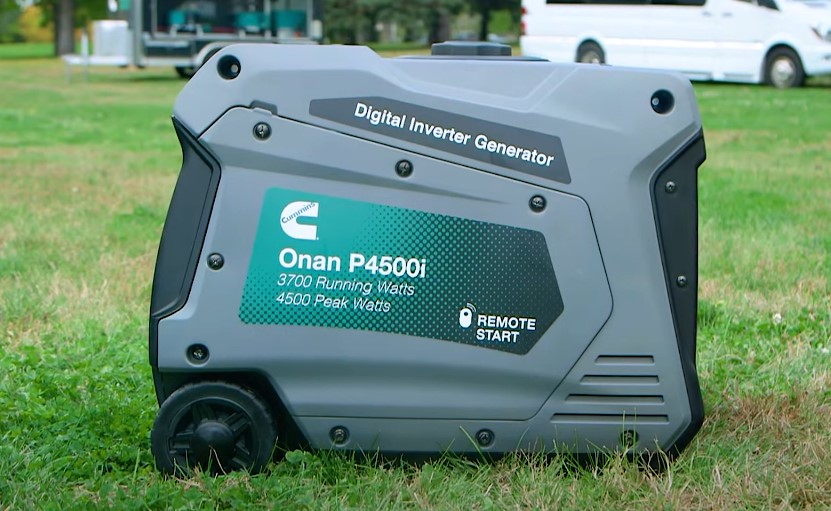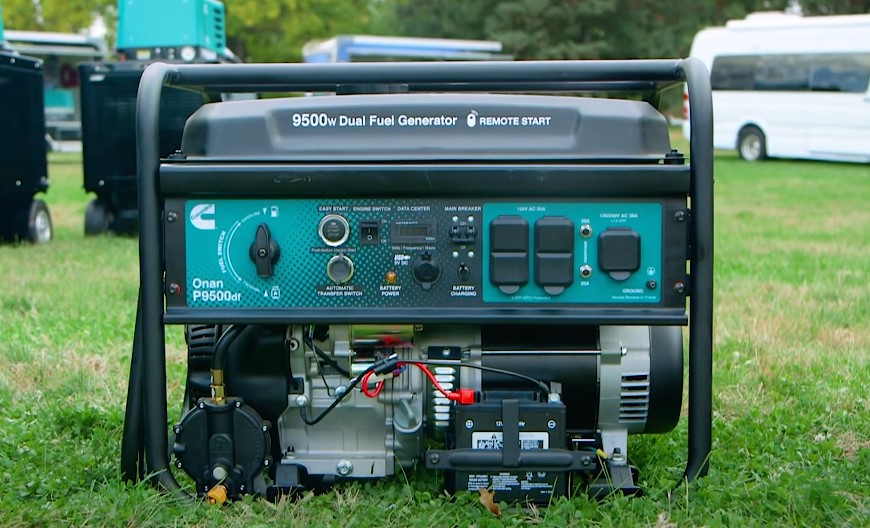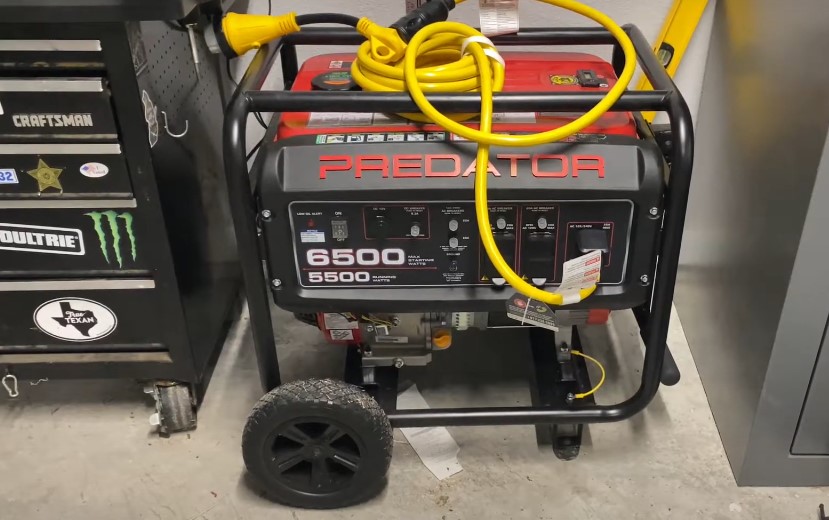Physical Address
304 North Cardinal St.
Dorchester Center, MA 02124
Physical Address
304 North Cardinal St.
Dorchester Center, MA 02124

Generators are lifesavers during power outages, but even reliable machines like Cummins Onan generators can face issues over time.
Understanding common Cummins Onan Generator problems and their easy fixes can save you time, money, and frustration.
This guide will help you identify and resolve simple issues yourself, ensuring your generator runs smoothly when you need it the most.
Onan generators can run into issues like starting failure, low power output, or unusual noises.
These problems are often caused by things like a dead battery, dirty filters, or old fuel.
Staying proactive with regular maintenance and quick troubleshooting can keep your generator running smoothly.

Cause
The fuel tank may be empty, or the fuel itself could be old and degraded, losing its combustibility.
A weak or dead battery is another frequent culprit, as it won’t have enough power to turn the engine over.
Clogged fuel filters or a blocked fuel line can also prevent the engine from getting the fuel it needs to start.
Fixes
First, check the fuel level and ensure you’re using fresh, clean fuel. If the fuel is more than a few months old, drain it and refill the tank.
Next, test the battery with a voltmeter; it should read above 12.4 volts. If it’s low, charge it or replace it if it no longer holds a charge.
Finally, inspect and clean or replace the fuel and air filters as part of regular maintenance.
Read Also: 6 Common Predator 6500 Generator Problems

Cause
The most common reason for this is low oil level, which triggers the low-oil sensor to shut down the engine to prevent damage.
Overheating, caused by a blocked air intake or a heavy load, can also activate a safety shutdown.
A clogged fuel filter or a faulty spark plug may also be to blame, as they can interrupt the engine’s operation.
Fixes
Check the engine oil level and top it off if it’s low. Ensure the generator is on a level surface, as a tilted position can cause an inaccurate oil sensor reading.
Clean the air filter and make sure the generator’s air vents are not blocked.
Reduce the electrical load to see if that resolves the issue, and inspect the spark plug for wear or carbon buildup, replacing it if necessary.
Cause
This problem is often caused by stale or contaminated fuel, which doesn’t burn cleanly.
A clogged carburetor is another primary suspect, as varnish deposits from old fuel can block the tiny jets inside.
A dirty air filter restricting airflow or a failing spark plug can also lead to rough running. In some cases, altitude can be a factor if the carburetor isn’t adjusted correctly.
Fixes
Start by draining the old fuel and replacing it with fresh fuel. Adding a fuel stabilizer can prevent future issues.
Use a carburetor cleaner to dissolve any buildup; you may need to remove and manually clean the carburetor if the problem is severe.
Replace the air filter and spark plug. If you frequently operate the generator at high altitudes, consider installing a high-altitude jet kit.
Cause
The most frequent cause is a tripped circuit breaker on the generator itself.
Another possibility is that the generator’s automatic voltage regulator (AVR) has failed, which is the component responsible for maintaining a steady voltage output.
Worn-out brushes in the alternator can also prevent electricity generation. Lastly, there could be a wiring issue or a faulty outlet.
Fixes
First, check the generator’s circuit breakers and reset them if they are tripped. If that doesn’t work, you may need a professional to test and replace the AVR.
You can visually inspect the brushes for wear and replace them if they are shorter than the recommended length.
Carefully check all external wiring and try plugging a device directly into a different outlet on the generator to rule out a bad connection.
Cause
The primary cause of overheating is a lack of proper ventilation, such as running the generator in a tight, enclosed space.
A heavy electrical load that exceeds the generator’s capacity can also force the engine to work too hard and overheat.
A low oil level is another factor, as oil helps cool the engine. Lastly, a dirty or clogged cooling fan or fins can prevent heat from dissipating effectively.
Fixes
Ensure your generator is operating in a well-ventilated area with plenty of space for air to circulate. Reduce the number of appliances connected to the generator to lessen the load.
Check the engine oil level and add more if needed.
Regularly clean the cooling fins and fan blades with a brush or compressed air to remove any dirt, grass, or debris that could obstruct airflow.
Cause
Blue or white smoke typically means the engine is burning oil, which can be caused by overfilling the oil crankcase or worn piston rings.
Black smoke indicates that the engine is running “rich,” meaning it’s burning too much fuel.
This is often due to a clogged air filter or a problem with the carburetor’s choke.
Fixes
If you see blue smoke, check the oil level and drain any excess if it’s overfilled. For black smoke, inspect and replace the air filter if it’s dirty.
Also, check that the choke is not stuck in the closed position.
If these simple fixes don’t solve the problem, the issue may be more complex, such as worn engine components, and will require professional service.
Cause
Rattling noises often come from loose parts, such as a heat shield or a panel.
Knocking or pinging sounds from the engine can be more serious, suggesting issues with internal components or the use of low-quality fuel.
Squealing is typically caused by a worn or loose belt. Excessive vibration can result from the generator being on an uneven surface or having loose mounting bolts.
Fixes
Turn off the generator and carefully inspect it for any loose bolts, panels, or components, and tighten them as needed.
If you hear engine knocking, try switching to a higher-octane fuel. Inspect the belts for wear and proper tension, replacing them if necessary.
Ensure the generator is placed on a flat, stable surface to minimize vibration, and check that all mounting bolts are secure.
Cause
Fuel lines can become cracked, brittle, or disconnected over time due to age and vibration. The carburetor bowl gasket may degrade and start to leak fuel.
In some cases, the fuel tank itself could have a crack or a faulty seal around the fuel cap. A stuck float in the carburetor can also cause it to overflow.
Fixes
Immediately turn off the generator and move it to a well-ventilated area away from any ignition sources.
Carefully inspect the fuel lines, tank, and carburetor for the source of the leak. Replace any cracked or damaged fuel lines.
If the leak is from the carburetor, you may need to replace the bowl gasket or clean a stuck float needle. Do not operate the generator until the leak is fully repaired.
You should follow the service schedule in your owner’s manual, but a general rule is to change the oil and filter every 100-150 hours of use or at least once a year.
Use fresh, unleaded gasoline with an octane rating recommended in your manual (usually 87 or higher). Avoid using E85 fuel unless your model is specifically designed for it.
The check engine light indicates a fault code has been stored. You can often retrieve the code by pressing the stop/prime button on the generator a specific number of times to make the light flash.
It is not recommended to run a generator in the rain without proper protection, as water can damage the electrical components and create a shock hazard. Use a generator tent or cover designed for wet weather operation.
You can reduce noise by ensuring it’s on a stable surface, adding a sound-dampening box (with proper ventilation), or installing an aftermarket muffler or resonator.